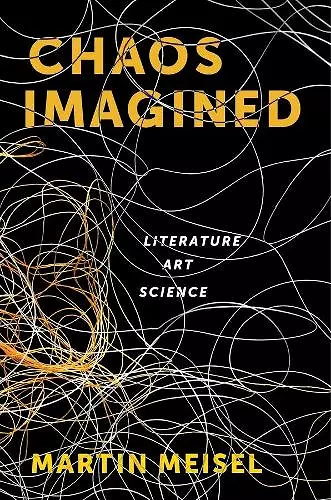Chaos Imagined
Literature, Art, Science
Format:Hardback
Publisher:Columbia University Press
Published:19th Jan '16
Currently unavailable, and unfortunately no date known when it will be back

Martin Meisel considers the long effort to conjure, depict, and rationalize extreme disorder, with all the passions, excitements, and compromises the act has provoked. He builds a rough history from major social, psychological, and cosmological turning points in the imagining of chaos, particularly exploring the remarkable shift in the eighteenth and nineteenth centuries from conceiving of chaos as disruptive to celebrating its liberating and energizing potential.
A sweeping historical and intellectual genealogy of our struggle to represent disorder from the classical period to the twentieth century.The stories we tell in our attempt to make sense of the world-our myths and religion, literature and philosophy, science and art-are the comforting vehicles we use to transmit ideas of order. But beneath the quest for order lies the uneasy dread of fundamental disorder. True chaos is hard to imagine and even harder to represent. In this book, Martin Meisel considers the long effort to conjure, depict, and rationalize extreme disorder, with all the passion, excitement, and compromises the act provokes. Meisel builds a rough history from major social, psychological, and cosmological turning points in the imagining of chaos. He uses examples from literature, philosophy, painting, graphic art, science, linguistics, music, and film, particularly exploring the remarkable shift in the eighteenth and nineteenth centuries from conceiving of chaos as disruptive to celebrating its liberating and energizing potential. Discussions of Sophocles, Plato, Lucretius, Calderon, Milton, Haydn, Blake, Faraday, Chekhov, Faulkner, Wells, and Beckett, among others, are matched with incisive readings of art by Brueghel, Rubens, Goya, Turner, Dix, Dada, and the futurists. Meisel addresses the revolution in mapping energy and entropy and the manifold effect of thermodynamics. He then uses this chaotic frame to elaborate on purpose, mortality, meaning, and mind.
Meisel has a unique perspective, remarkable command of examples, and astute use of etymologies. His discussions of Sophocles, Calderon, Chekhov, Beckett, and Stoppard are matched by equally detailed and thoughtful considerations of graphics by Otto Dix, the landscapes of Turner, War and Peace, Zola's Rougon-Macquart series, and Haydn's Creation. -- Ross Hamilton, Barnard College Meisel's magnum opus is a heroic act of defiance against its own subject matter: an enlightening, judicious, cohesive history of three millennia of thought about the terrors and attractions of chaos. The book moves with steady confidence through literature, science, art, and philosophy, illuminating many varieties of darkness and finding convincing and original connections across centuries and continents. With authority and energy, Meisel creates a whole new field of study. -- Edward Mendelson, Columbia University This extraordinary, encyclopedic exploration of how artists, poets, philosophers, and scientists have imagined and represented chaos explores not chaos in the abstract but those crucial transitions to (and from) chaos that are so intricately represented in the most complex artworks. The unpredictable is then made not predictable but endlessly fascinating. Martin Meisel's is a bravura performance, one of those rare critical studies not for one but for all seasons. -- Marjorie Perloff, Stanford University This exhilarating masterpiece can only have emerged from a mind steeped in physics as an undergraduate and theater as a graduate student, followed by the broadest explorations in a lifetime of scholarship. The world may have emerged from the quantum 'chaos' of the Big Bang, but Meisel has ordered everything since beautifully. -- David Helfand, author of A Survival Guide to the Misinformation Age [An] ambitious multidisciplinary work. Publishers Weekly
ISBN: 9780231166324
Dimensions: unknown
Weight: unknown
608 pages